
Batman: Arkham Asylum Graphics
Graphically, Batman: Arkham Asylum is quite simply a tour de force and is quite breathtaking to look at. Interestingly though, that’s not purely down to the graphics themselves but also down to the character designs and stylised approach the designers have taken.The design and artistry that’s gone into the game is clearly most influenced by the comic books rather than the films or TV series, with Batman preferring his grey Kevlar and high boots to any of the more modern interpretations. Likewise, the Joker and the supporting villains stay true to their campy comic book origins – with even gimmick heroes like Tweedledee and Tweedledum getting a mention.
The actual graphics themselves are still excellent on the higher settings, with a level of detail and flourish that puts most games to shame. We did notice the odd clipping issues and ragdolls which collapsed in default poses, but it’s of no real importance. Besides, the real star of the show here is the Asylum itself, which exudes a tangible sense of history – through both use and abuse.

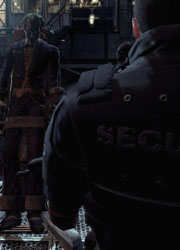
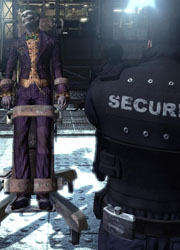
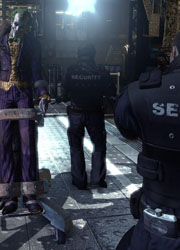
Batman: Arkham Asylum on (left to right) Low, Medium, High and Very High graphic settings - click to enlarge
Just like in the comics, Arkham Asylum isn’t some massive, modern bastion of brushed steel and electrified fences. Instead, it’s a partly condemned, crumbling colossus of another age – Victorian gargoyles peering out among the patchwork security systems of the modern age. Wires wriggle through the oversized vents like veins and the deeper you pursue the Joker the harder it becomes to shake the feeling that you’re being swallowed by something you can’t quite understand. That, or we’ve been reading too much H.P Lovecraft lately.
Either way, the recommended requirements for the game (2GB RAM, Nvidia GeForce 7900 or higher, 3GHz Dual Core) are hardly excessive by today's standards and on a Nvidia GeForce GTX 280 we had absolutely no problem running the game with every setting maxed out, including the PhysX options, at 1,920 x 1,080. If you need it though then there are lower presets and some graphics options which let you trim out the dynamic shadows, AA and so on. Check the screenshots above for a rough idea of what the presets look like.
Ah, yes – the PhysX. As well as being a member of Nvidia’s The Way It’s Meant To Be Played program, Batman: Arkham Asylum has also undergone a series of important enhancements that are accessible for anyone using Nvidia hardware. You don’t need the Nvidia hardware to run the game on full settings of course, but you do need it to run the game with Stereoscopic 3D and enhanced PhysX content.
The PhysX setting itself has three options; Off, Normal and Enhanced. Off is for those of you who are having framerate problems and it disables any improved physics so that you just get the core game. Normal includes a few PhysX extras; the occasional curtain and the improved debris when you knock chunks out of the wall. Enhanced is where it’s really at though, adding smoke clouds that billow both beautifully and realistically when you pass through, plentiful curtains and cobwebs that all have cloth physics and police tape and ropes you can slice with your batarang. Hypothetically you could probably gain some tiny gameplay advantage through exploiting it, but it’s mainly just visual flair and doesn’t affect the gameplay too much.
That said, for those of you wanting our honest opinion, we’ll admit that if you want to get the most out of Batman then you will need Nvidia hardware – and the extra content is worth the effort if you’re thinking of making an upgrade soon anyway. At the same time though, it is worth noting that Nvidia has probably inflated the requirements somewhat – it recommends a GTX 260 and a PhysX dedicated 9800 GTX for the Enhanced setting, but we were fine with a single card. It’s also worth pointing out that Batman’s cape does not use PhysX and is the same on every setting, purely because it’s such an important part of the visuals.
Nvidia has also made sure there are some enhancements for 3DVision, its stereoscopic 3D product too. We’ve reviewed 3DVision before and there isn’t all that much to add to our original thoughts other than that the game has been developed with 3DVision in mind, so it doesn’t have the headache-inducing problems we noted with games like Team Fortress 2. Some parts of the game, particularly the cinematic boss fights with Scarecrow, really benefit from 3DVision, but unlike PhysX it probably isn’t worth considering it unless you’ve got money to burn, if only because the price is that much more and depends on replacing your screen with a 120Hz model too.

MSI MPG Velox 100R Chassis Review
October 14 2021 | 15:04




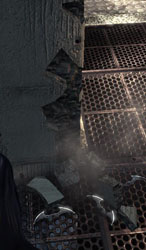
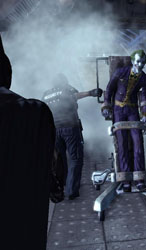








Want to comment? Please log in.